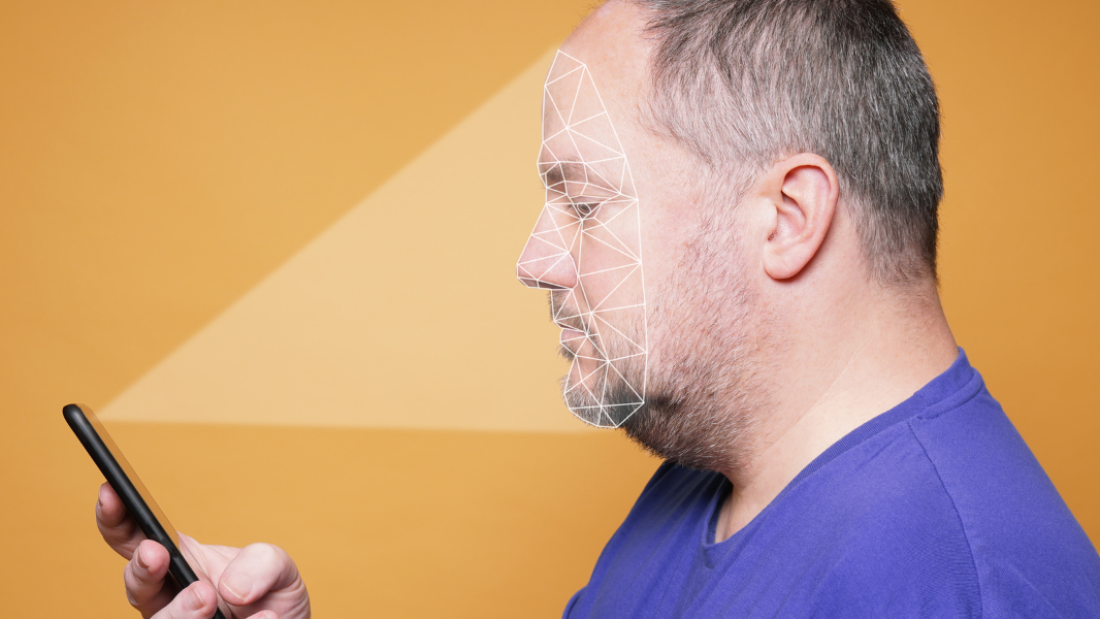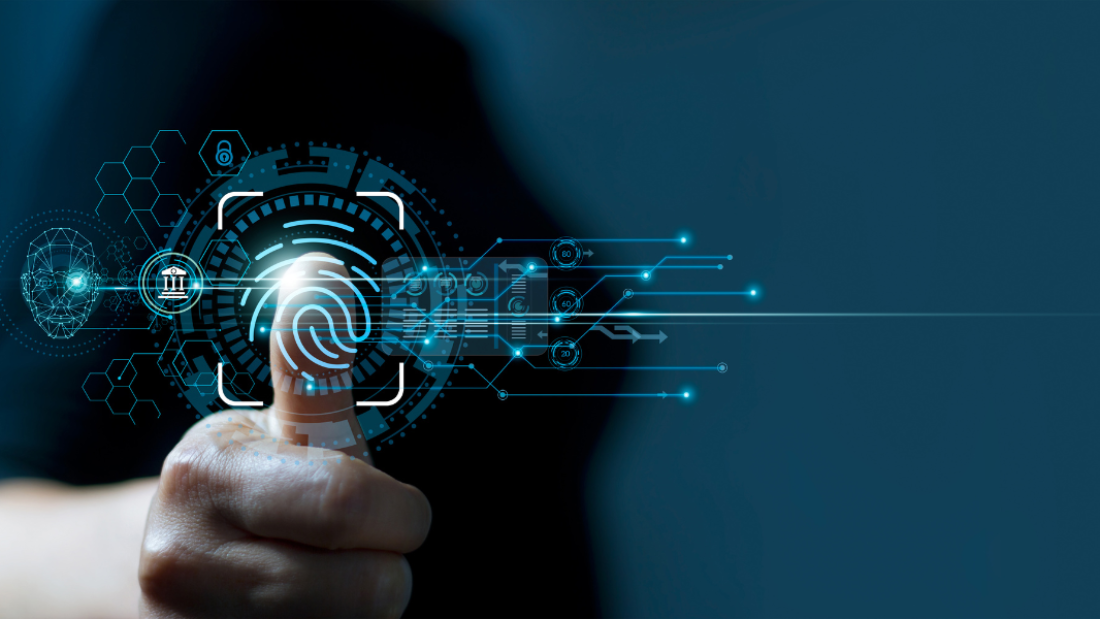Looking to revolutionize your security measures with cutting-edge technology? Dive into the world of scalable facial ID solutions. Imagine a seamless blend of convenience and top-notch security, all at your fingertips. Are you ready to elevate your access control and identity verification systems effortlessly? Stay ahead of the curve with scalable facial ID solutions that cater to your evolving needs. Embrace the power of innovation and efficiency in safeguarding what matters most.
Enhanced Public Safety
Increased Surveillance
Enhanced security solutions utilizing scalable facial ID technology significantly boost surveillance capabilities, aiding in deterring criminal activities effectively. By leveraging advanced security features, these systems continuously monitor public areas, promptly identifying potential threats.
Surveillance cameras equipped with facial recognition software can swiftly scan crowds, flagging individuals linked to criminal databases. This proactive approach enables security officers to intervene promptly, preventing incidents before they escalate. Moreover, the real-time analysis of facial data enhances law enforcement’s ability to track suspects efficiently.
Real-Time Suspect Identification
In critical scenarios, such as emergencies or ongoing criminal activities, specific security measures are crucial for swift responses. Scalable facial ID solutions play a vital role in facilitating the rapid identification of suspects. By cross-referencing captured facial data with existing databases, authorities can promptly pinpoint individuals of interest.
The integration of facial recognition technology into surveillance systems streamlines the identification process, enabling security personnel to act decisively in real-time situations. This accelerated response time enhances overall public safety and minimizes the risk of criminal incidents going unresolved.
Transparent Safety Measures
To foster community trust and cooperation, data security protocols must be transparent and effective. Implementing scalable facial ID solutions not only ensures robust privacy protection but also strengthens security measures. By openly showcasing the use of advanced security features like facial recognition, organizations demonstrate their commitment to safeguarding sensitive information.
Furthermore, by addressing privacy concerns proactively and implementing stringent security protocols, institutions enhance public confidence in their ability to protect personal data. This transparency fosters a collaborative environment where citizens feel reassured that their privacy is prioritized.
Efficient Identity Verification
Accelerated Onboarding
Streamlining the identity verification process with biometric identity solutions expedites onboarding for various services. By utilizing digital identification platforms, organizations can swiftly verify identities, reducing the time required for registration.
Automating accurate identity verification processes minimizes human errors commonly associated with manual checks. Implementing facial ID solutions ensures a seamless and error-free verification process, enhancing the overall security of the system.
Enhanced User Experience
Secure identification processes not only combat identity theft but also improve the user experience. By incorporating biometric authentication, wait times during verification are significantly reduced, leading to higher customer satisfaction levels.
Utilizing biometric identification offers a more efficient way to manage identities. Organizations can offer a seamless and secure digital ID solution that enhances user convenience while maintaining robust security measures.
Streamlined Government Operations
Resource Allocation
Optimize resource allocation by identifying areas needing attention. By leveraging scalable facial ID solutions, government entities can efficiently allocate resources where they are most needed. This targeted approach ensures that limited resources are utilized effectively to enhance operational efficiency.
Centralized Identity Databases Improve data management through centralized identity databases. These databases streamline user management processes by storing identity information in a secure and accessible manner. By consolidating identity data, government agencies can enhance the accuracy and reliability of their operations.
Inter-Agency Collaboration
Foster inter-agency collaboration with shared access to identity information. Through streamlined authentication processes enabled by facial ID solutions, different government agencies can securely access and verify identity information. This seamless operation promotes collaboration and information sharing among agencies, leading to enhanced regulatory compliance and operational efficiency.
Enhanced resource allocation
Improved data management
Fostered inter-agency collaboration
Improved Emergency Response
Quick Identification
Scalable facial ID solutions enable quick identification of individuals in distress, crucial for swift emergency responses. By utilizing advanced facial recognition technology, responders can promptly locate and assist those in need.
Facial recognition systems can scan crowds rapidly, pinpointing individuals requiring aid during emergencies. This capability significantly speeds up the identification process, ensuring timely assistance to those facing risks or threats.
Critical Information
First responders benefit from improved security measures as they receive critical information instantly through facial ID solutions. These systems provide real-time updates on potential risks, enabling responders to make informed decisions promptly.
By accessing essential details about individuals involved in emergency situations, responders can tailor their response strategies effectively. This instant access to critical information enhances the overall efficiency and effectiveness of emergency response efforts.
Enhanced Coordination
Scalable facial ID solutions contribute to enhancing coordination among emergency services by facilitating seamless data sharing. Through a centralized platform, different agencies involved in emergency response can collaborate efficiently.
Shared data among various emergency services ensures that all responders are well-informed and coordinated in their actions. This collaborative approach improves overall event management and enhances the safety and security of the affected individuals.
High Accuracy and Reliability
Advanced Algorithms
Advanced algorithms play a crucial role in reducing false positives in facial recognition systems. By leveraging sophisticated technology, these solutions can accurately identify individuals with minimal errors. The implementation of advanced algorithms ensures that the system delivers precise results, enhancing accuracy and trust in the technology.
Utilizing cutting-edge algorithms enables facial ID solutions to achieve accurate face recognition capabilities, minimizing the occurrence of false positives. These algorithms analyze intricate facial features, such as unique contours and proportions, to ensure accurate identification. By focusing on precision and detail, these systems enhance facial recognition accuracy, leading to improved performance and reliability.
Consistent Performance
One key aspect of scalable facial ID solutions is their ability to maintain consistent performance across diverse environments. Regardless of varying lighting conditions or angles, these systems are designed to deliver reliable results consistently. This consistency is essential for applications requiring accurate face recognition, such as security checkpoints or access control systems.
Facial recognition technology must be robust enough to operate effectively in different scenarios. By ensuring consistent performance, these solutions instill satisfaction and loyalty among users who rely on them for various purposes. Whether used for identity verification or attendance tracking, the ability to perform reliably in any environment is a hallmark of high-quality facial ID solutions.
Regular System Updates
To stay ahead of evolving threats and challenges, it is crucial to regularly update facial recognition systems. These updates include enhancements to algorithms, bug fixes, and security patches to maintain the system’s cutting-edge accuracy. By incorporating the latest technological advancements, these updates ensure that the system remains effective and efficient over time.
Timely updates are essential for addressing any potential errors or vulnerabilities in the system. By analyzing analytical findings and user feedback, developers can identify areas for improvement and implement necessary updates promptly. This proactive approach not only enhances system performance but also demonstrates a commitment to continuous improvement and innovation.
Integration with Existing Systems
Seamless Integration
Facilitating seamless integration of scalable facial ID solutions into current security frameworks is crucial for maximizing efficiency. By ensuring compatibility with different systems, organizations can streamline operations and enhance overall security measures. This integration process allows for a smooth transition without disrupting existing workflows.
By connecting with various surveillance systems and authentication systems, facial ID solutions can expand their functionality. This integration not only enhances security but also provides a comprehensive approach to monitoring and access control. Leveraging software platforms and technologies ensures a holistic solution that caters to diverse needs within enterprises.
Cost-Effective Implementation
Integrating facial ID solutions with existing infrastructure helps in reducing implementation costs significantly. Organizations can avoid the expenses associated with setting up new systems by utilizing their current resources effectively. This cost-effective approach enables enterprises to adopt advanced security measures without incurring substantial financial investments.
By integrating facial recognition systems with existing software platforms and services, organizations can optimize their resources efficiently. This integration enhances user experiences and ensures a seamless transition for both customers and employees. The ability to integrate with various technologies also future-proofs the system, allowing for scalability as the organization grows.
Enhanced Functionality
Connecting scalable facial ID solutions with other verification technologies enhances overall functionality. By integrating with different systems, organizations can create a robust security infrastructure that adapts to evolving threats effectively. This enhanced functionality not only improves security measures but also elevates customer interactions and experiences.
The integration of facial ID solutions with existing infrastructure and technologies paves the way for advanced monitoring capabilities. This interconnected approach allows organizations to monitor activities across various touchpoints, ensuring comprehensive security coverage. By integrating with authentication systems, enterprises can strengthen access control mechanisms and safeguard sensitive information effectively.
Scalability and Flexibility
Customization
Scalable facial ID solutions offer customization options to align with specific organizational needs and policies. Organizations can tailor the solution to meet their unique requirements, ensuring seamless integration with existing systems. This level of customization enhances compatibility maximization and ensures a smooth transition for employees.
Enhancing transparency and convenience, organizations can adjust the solution’s parameters to streamline employee access. By customizing the solution, companies can optimize recognition capabilities based on their operational workflows, maximizing efficiency and convenience. This flexibility allows for a more tailored approach, leading to increased customer satisfaction and improved user experience.
Adaptability
One of the key advantages of scalable facial ID solutions is their adaptability to varying demands across different environments. These solutions can seamlessly adjust to fluctuating user volumes, supporting growth without compromising on performance. By accommodating increasing user volumes effortlessly, organizations can ensure efficient performance even during peak usage periods.
The adaptability of scalable ID solutions extends to their ability to evolve with technological advancements. Leveraging machine learning capabilities, these solutions continuously enhance their recognition capabilities, ensuring accuracy and reliability over time. This adaptability not only future-proofs organizations but also enables them to stay ahead in the rapidly evolving landscape of facial recognition technology.
Analytics Integration
Scalable facial ID solutions also offer advanced analytics integration, providing organizations with valuable insights into employee behavior and system usage. By leveraging analytics tools, companies can gain a deeper understanding of employee interactions with the system, enabling data-driven decision-making. This integration enhances compliance efforts by providing detailed audit trails and activity logs for regulatory purposes.
Pros:
Customizable to fit specific organizational needs.
Seamless adaptation to varying user volumes.
Advanced analytics integration for data-driven decision-making.
Cons:
Initial implementation costs may be high.
Ongoing maintenance and updates could require additional resources.
Applications in Public Safety
Transportation Security
Implementing facial recognition technology in public transportation systems enhances security by accurately identifying individuals boarding vehicles. This application assists authorities in monitoring and managing passenger flow, ensuring a safe travel experience for commuters.
Utilizing facial ID solutions in public transport enables swift assessments of passengers, identifying potential threats or individuals of interest. By integrating this technology with existing security measures, transportation agencies can strengthen their ability to prevent criminal activities and ensure passenger safety effectively.
Event Safety Monitoring
In large events such as concerts or festivals, deploying facial recognition systems aids in retail crowd safety monitoring. By analyzing real-time footage, security personnel can quickly detect any suspicious behavior or individuals within the crowd, allowing for immediate intervention to maintain order and prevent incidents.
Facial ID solutions serve as a valuable tool for event organizers to conduct efficient security checks and manage attendee access. This technology provides an extra layer of security by verifying attendees’ identities, reducing the risk of unauthorized entry and enhancing overall event safety.
School Security Enhancement
Deploying facial recognition systems in educational institutions enhances student and staff safety by accurately identifying individuals entering school premises. This application enables schools to monitor visitor access, track attendance, and quickly respond to any security threats or emergencies that may arise on campus.
Final Remarks
In a world where security and efficiency are paramount, scalable facial ID solutions offer a game-changing advantage. Enhanced public safety, streamlined government operations, and high accuracy are just the beginning. The ability to integrate seamlessly with existing systems and adapt to evolving needs makes these solutions indispensable in various applications. Your organization can benefit immensely from the power of scalable facial ID technology. Embrace this innovative tool to elevate your operations, enhance security measures, and optimize processes for a brighter, more efficient future.
Frequently Asked Questions
What are the benefits of using scalable facial ID solutions for public safety?
Using scalable facial ID solutions enhances public safety by providing efficient identity verification, streamlined government operations, improved emergency response, high accuracy, and reliability. It integrates with existing systems, ensuring scalability and flexibility for various applications in public safety.
How do scalable facial ID solutions improve emergency response times?
Scalable facial ID solutions enhance emergency response times by quickly verifying identities, aiding in locating missing persons or suspects, and enabling authorities to make informed decisions promptly. The high accuracy and reliability of these solutions contribute significantly to improving overall emergency response efficiency.
Can scalable facial ID solutions be seamlessly integrated with existing systems?
Yes, scalable facial ID solutions are designed to seamlessly integrate with existing systems, making it convenient for organizations to adopt this technology without disrupting their current operations. This integration ensures a smooth transition and allows for enhanced functionality across different platforms used in public safety operations.
In what ways do scalable facial ID solutions streamline government operations?
Scalable facial ID solutions streamline government operations by automating identity verification processes, reducing manual efforts, and enhancing the overall efficiency of administrative tasks. This leads to cost savings, increased productivity, and improved decision-making within government agencies that rely on secure identification methods.
How does the scalability and flexibility of facial ID solutions benefit organizations?
The scalability and flexibility of facial ID solutions allow organizations to adapt to changing needs and increasing demands without compromising performance. Whether handling a small or large volume of data, these solutions can grow alongside the organization, ensuring reliable and efficient identity verification processes at all times.









